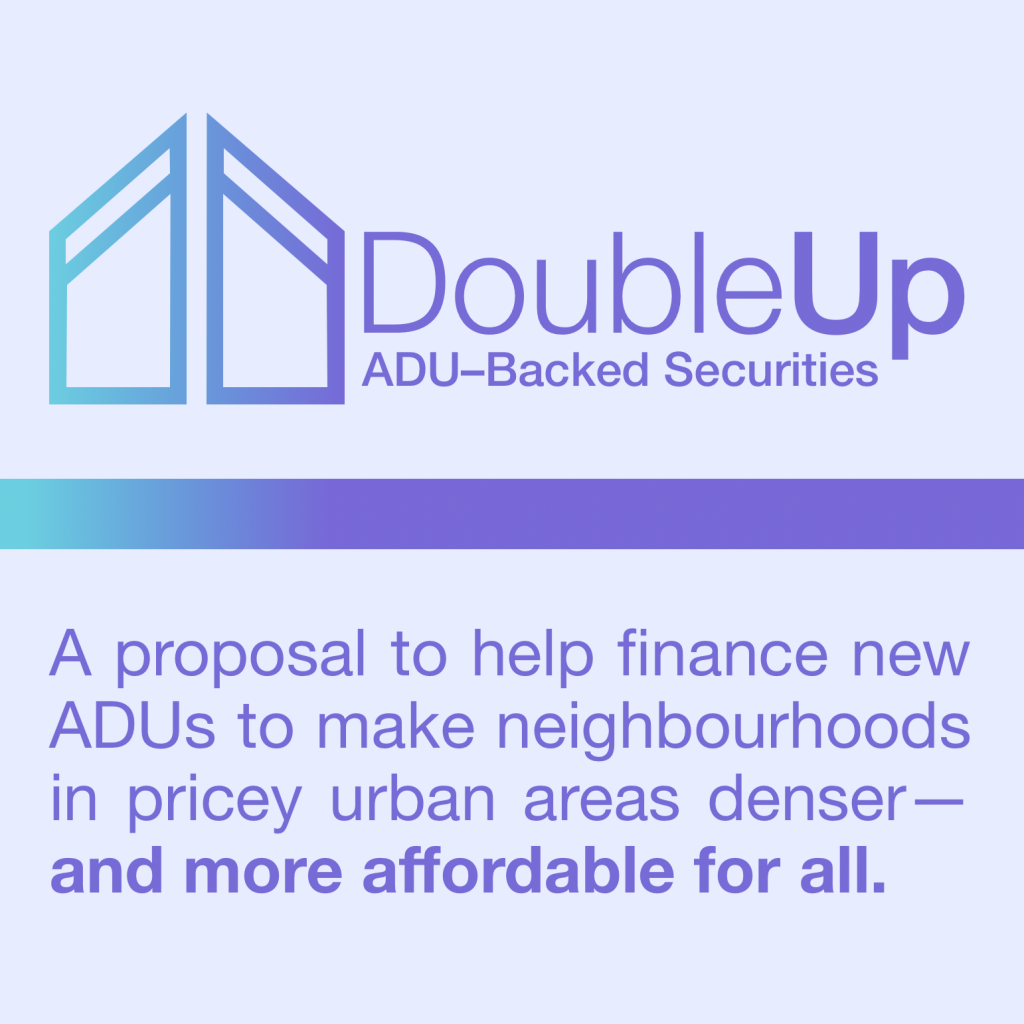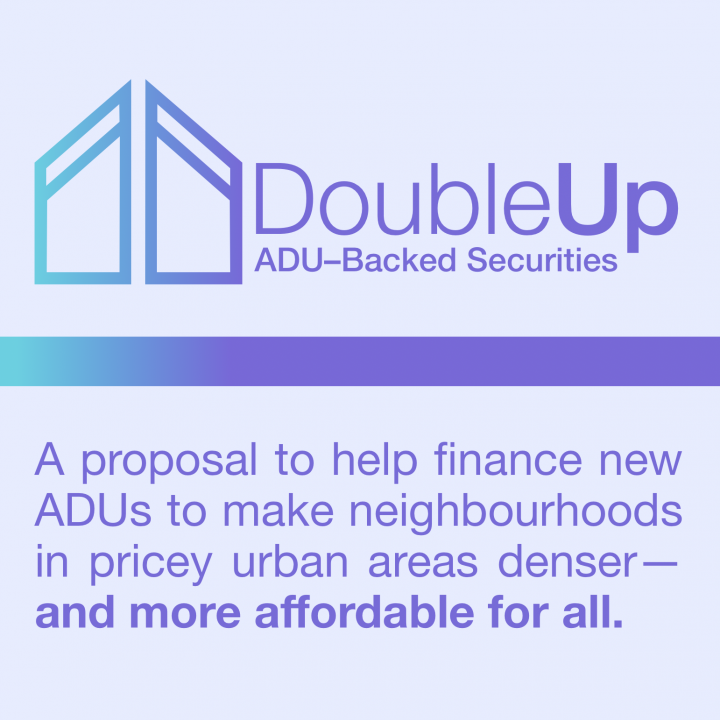Edit: We made it to the Top 4 of the 2019 Kellogg-Morgan Stanley Sustainable Investing Challenge in Hong Kong, which meant us presenting, surreally, to some of Asia’s top investors at Morgan Stanley’s sleek offices in the International Commerce Centre. Hampton and me visited with Eric, Michelle, and Hayley in April 2019, shortly before Hong Kong’s democracy protests began.
I am grateful we got to see the city before the crackdown, and I stand in solidarity with the people who rose up and fought for their rights.
A few months ago, my friend Hayley Cox sent me and a few fellow housing innovation hounds an announcement about the Kellogg-Morgan Stanley Sustainable Investing Challenge, a competition that solicits ideas for financial vehicles that generate investor returns with significant social and environmental benefits.
It happened that some of us had just finished a group project about ADUs (accessory dwelling units) as a way to fight the housing crisis by making single-family neighbourhoods denser. We presented our findings to our class, and they summed up to: if we build more ADUs in people’s backyards, we can add small-scale, affordable rental stock at a relatively low cost; but, right now, getting an ADU financed is pretty difficult for most homeowners.

On their faces, ADUs aren’t cheap. Often, they can cost $150-200K to build—which sounds like (and is) a lot of money. Of course, I’m writing this in Oakland, across the bay from a city where it costs $700K to build a single apartment. So they’re a lot more affordable than some of the other formats of housing out there. Plus, they fit neatly in the backyard of an existing house. These little ADUs have the potential to make single-family neighbourhoods denser. This has environmental benefits; it saves governments (and taxpayers) money vs. building new suburban sprawl; and it doesn’t unduly tax the infrastructure in neighbourhoods, most of which can easily support several more housing units than they have.
So let’s call them good. The thing is, putting together $200K isn’t easy for most people. (I sure haven’t ever seen that much money in my life.) Most of the ones that have been built to date have been financed by individual homeowners paying out of pocket, or taking equity loans against their houses. This isn’t an option for most people. If loans were more widely available, that could expand ADUs far beyond the wealthiest homeowners and to the masses. Lower-income homeowners—who are vulnerable to the rapidly rising cost of living in places like Toronto, Vancouver, Seattle, Portland, Los Angeles, and the Bay Area (all of which have recently passed or strengthened laws allowing backyard ADUs)—might be able to support themselves with a second stream of rental income, helping them keep their houses long term.

There are a handful of companies, most notably Portland’s Dweller, which are taking the financial risk for people who can’t drum up the cash. They’ll come to your neighbourhood, build an ADU on your lot at no cost to you, and split the income from renting it for several years. But they also require ground leases, which limit what homeowners can do to their yards, and make it more complicated to sell and move—which could be a real barrier.
So, then, how do we fix this problem? How do we make ADUs a real option to the millions of families who don’t have $200K sitting around, and the millions of people who might rent them?
Well, four of us—myself, Hayley, and our pals Eric Valchuis and Michelle Boyd—got to thinking about it, and turned to the mortgage market. For decades, Fannie Mae and Freddie Mac have been taking loans banks have made to people, chopping them up, and selling them to investors who want a long-term stream of payments with a decent return. That process, known as securitization, might sound familiar—because it arguably almost destroyed the American economy during the Great Recession. (An incredible 2008 This American Life episode describes that process here.)

Securitization has a rocky history, but the fact is that it works when it’s done responsibly. It has meant that millions more mortgage borrowers have had access to credit, by freeing up the money lenders tie up in a given mortgage. Extending that model to ADU construction is the vision behind DoubleUp ADU-Backed Securities, a pitch with which the four of us have suddenly found ourselves in the 2019 final rounds for two forthcoming events: the aforementioned Sustainable Investing Challenge (in Hong Kong this year!) and the Harvard Real Estate Venture Competition.

I’ve had a lot of questions about what DoubleUp would do since sharing that news on LinkedIn, and wanted to quickly flesh out the idea without getting too lost in the specifics. (I’ve also uploaded our initial proposal (PDF) here, in case anyone’s curious about those specifics.) There are a handful of small lenders—mostly credit unions and mission-driven CDFIs seeking to make a difference in the housing crisis—which are making construction loans to people who want to build a rental ADU and don’t have hundreds of thousands of dollars sitting around. These loans help less wealthy people build new housing, which they can rent out to support their families; they help produce ADUs that might be the ideal low-cost rental stock for people priced out of the market.
By securitizing these loans, DoubleUp will help free up money on these lenders’ balance sheets that they can use to make even more loans, building more ADUs, and helping address the housing crisis. It could help prove to bigger financial institutions the value in offering these loans, while giving investors a way to generate a reasonable, short-term return with a meaningful set of social benefits. And it can do this without new government regulations or spending—a pure creature of the market.

It looks complicated, but it’s a pretty simple financial instrument—basically, DoubleUp would enable investors to buy ADU construction loans they wouldn’t otherwise be able to buy. And that’s the rub—this is a new model that could make a real positive difference, and one I’m excited to be presenting about in Boston and Hong Kong in the next several weeks.
Happy to answer any questions, field any thoughts, and generally figure out how to make this idea a reality. Please feel free to reach out to me via my about-me page. Naturally, I’ll update this post with the results from our competitions—cross your fingers for us!
